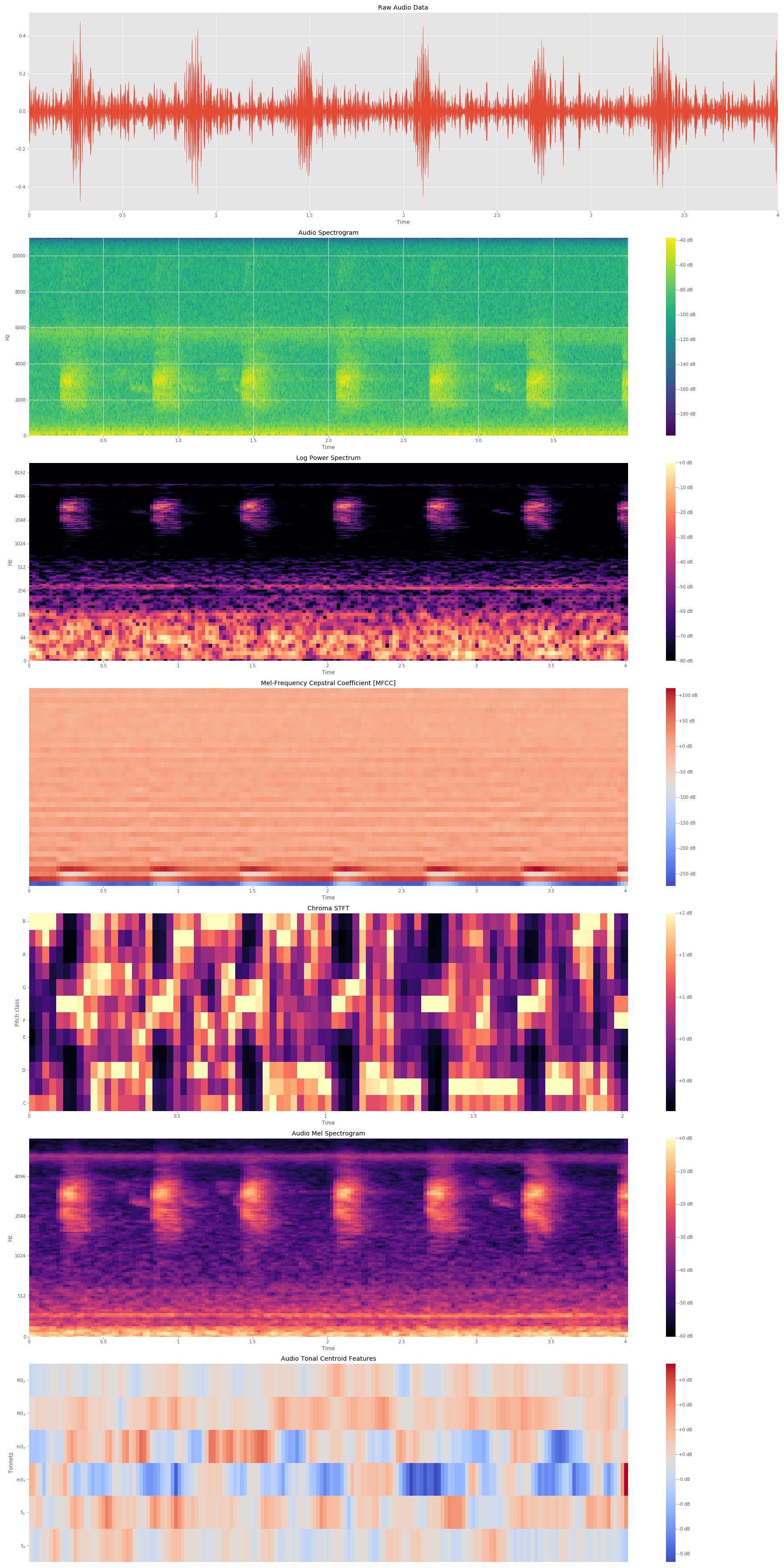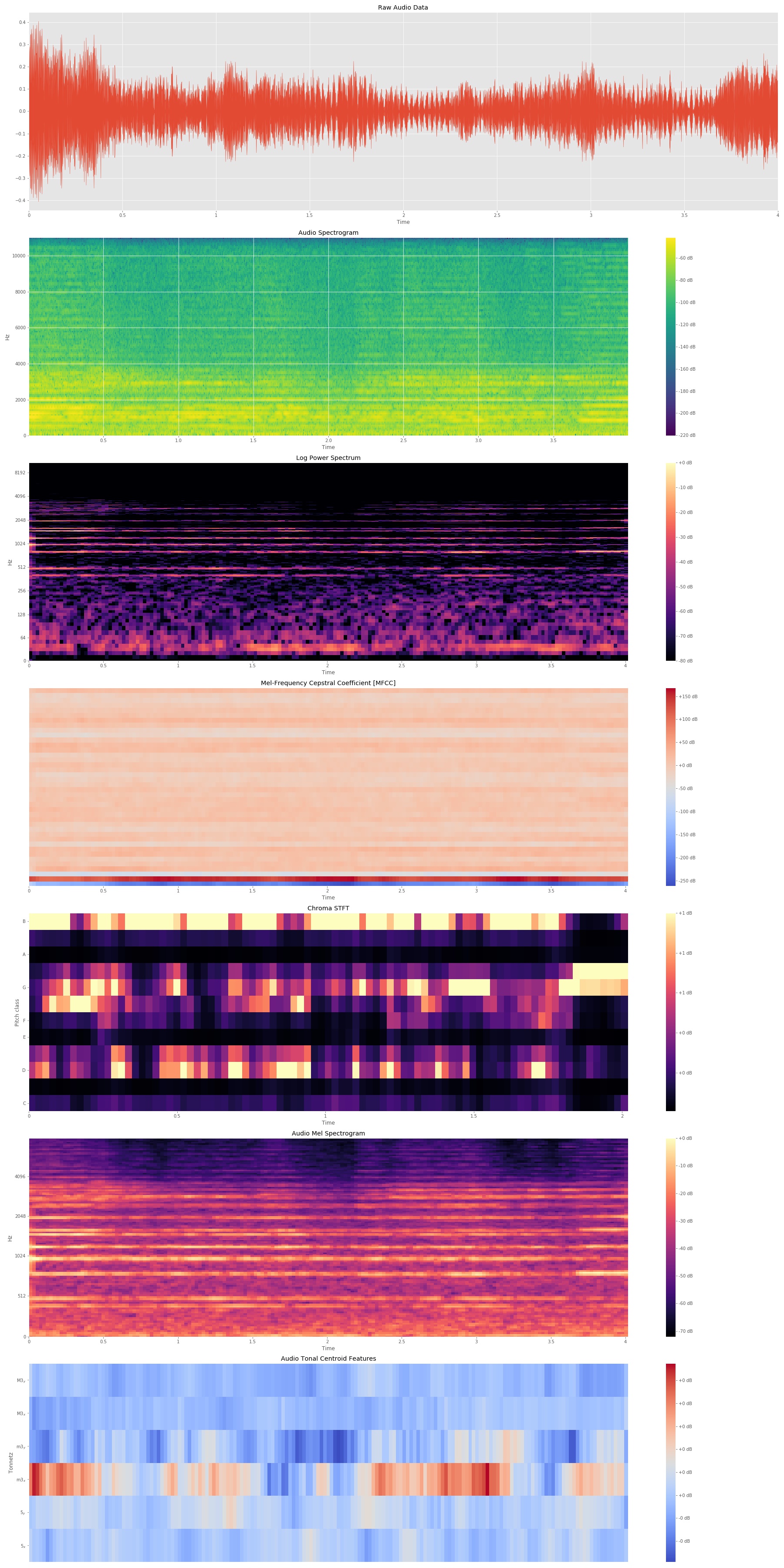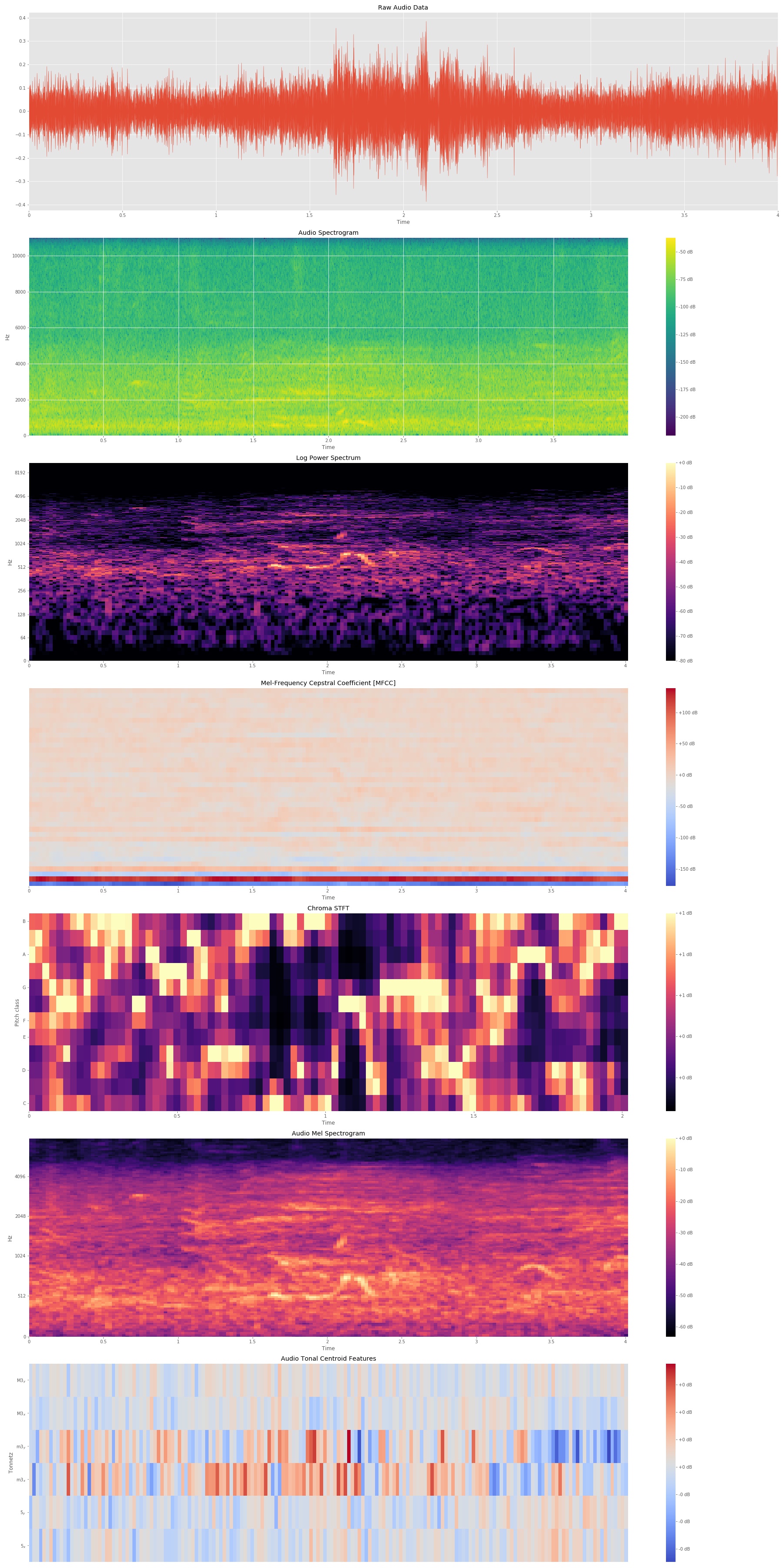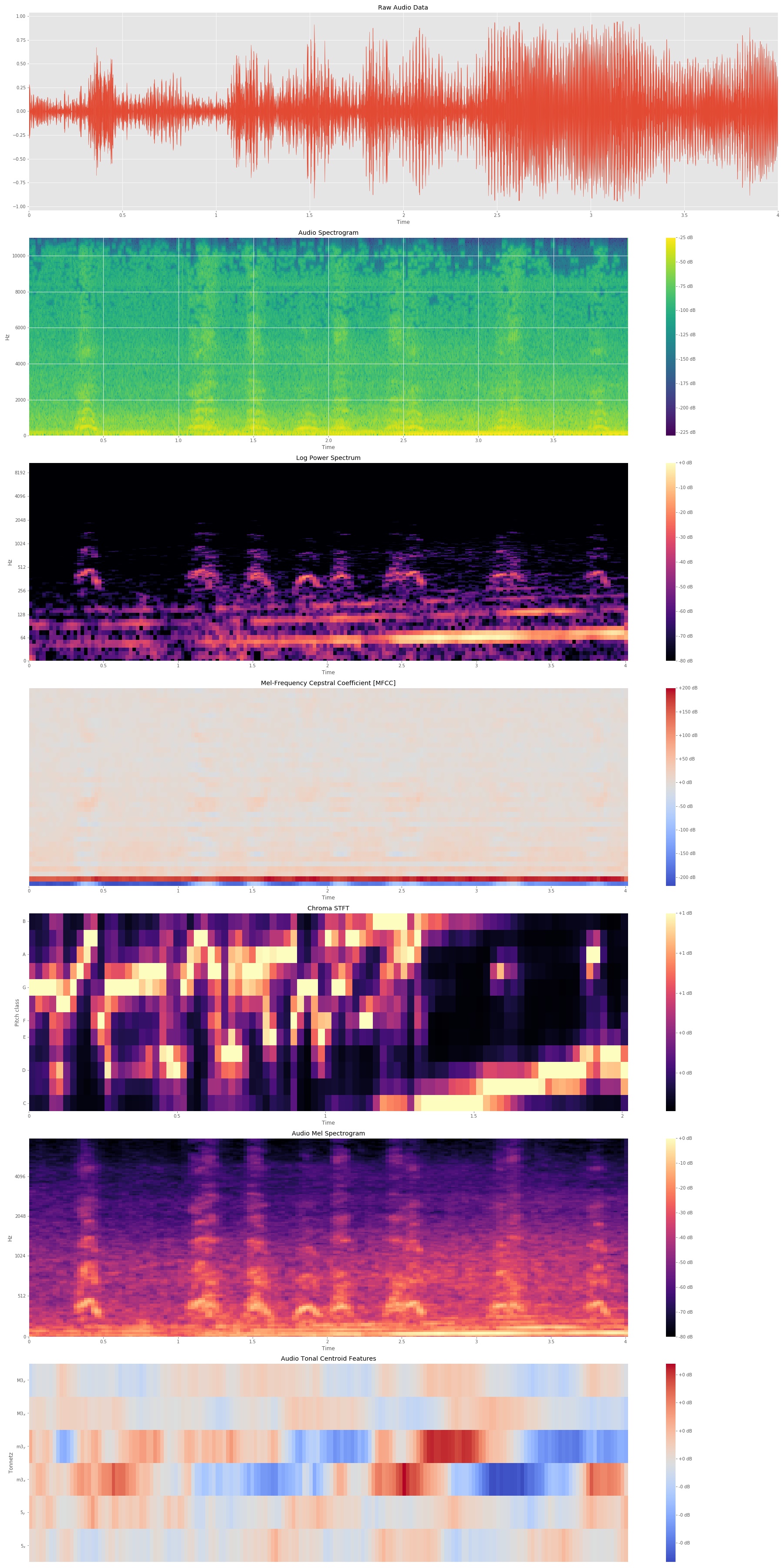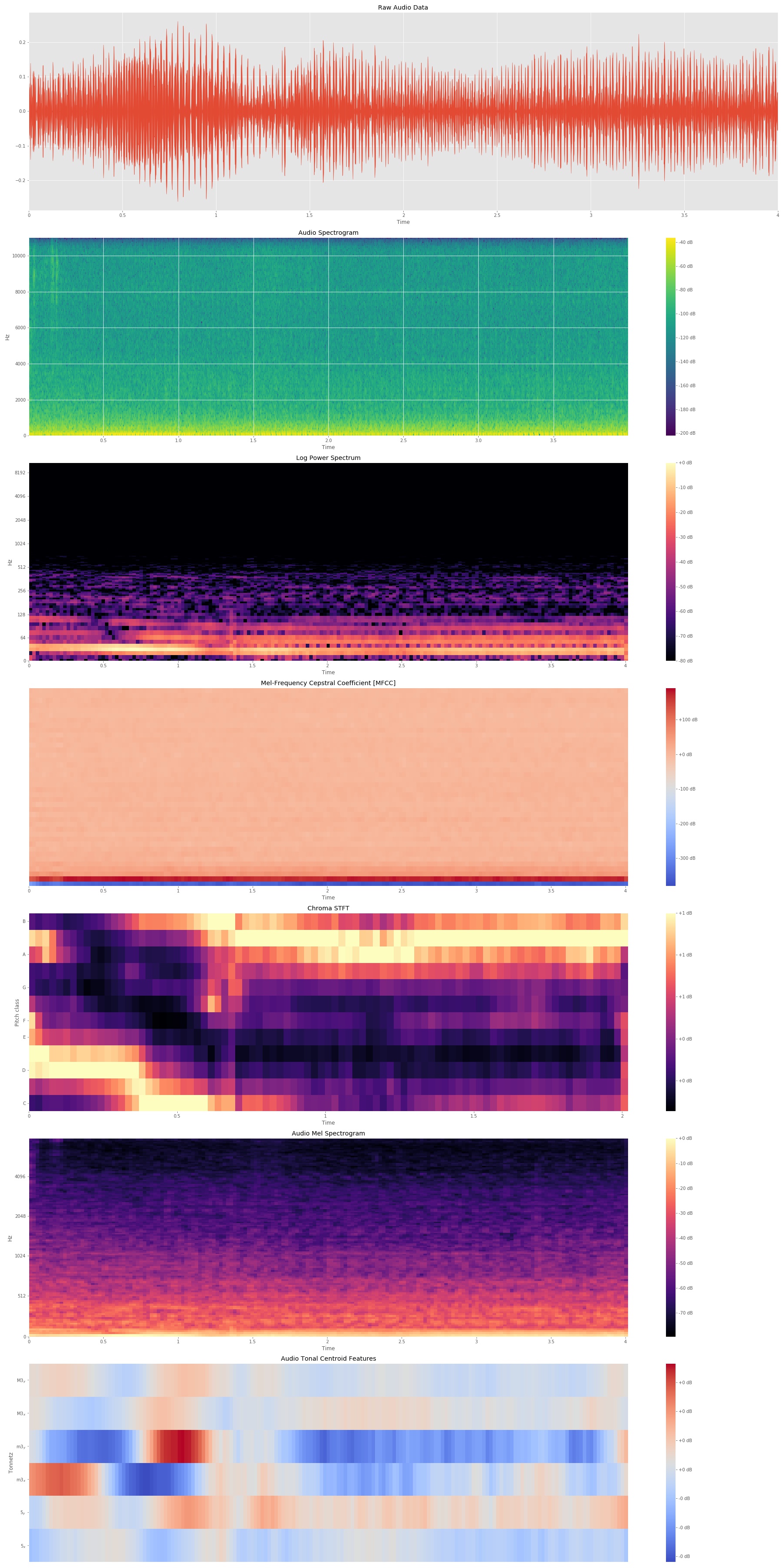This repository contains the code for project "Audio Scene Classification". This project uses audio in the nearby environment to classify the things in a scene without using a visual component.
PROJECT STATUS: Ongoing
To convert WAVE audio files from 44.1 or 48 KHz to 16 KHz PCM WAVE file, use the following command from the current audio files folder:
for f in *.wav;do
ffmpeg -i $f -ar 16000 path_to_destination_folder/${f};
done
1. Python 3.6
2. Librosa 0.6 [Audio Processing Library]
pip3 install librosa --upgrade
3. Matplotlib
pip3 install matplotlib --upgrade
4. Keras
pip3 install keras --upgrade
5. Tensorflow
pip3 install tensorflow --upgrade
or
pip3 install tensorflow-gpu --upgrade
NOTE: Tensorflow GPU requires CUDA and cuDNN.
6. Pickle
pip3 install pickle --upgrade
7. TQDM [for Progressbar]
pip3 install tqdm --upgrade
The dataset I am using for this project is the "UrbanSound dataset".
Download the dataset from the link below and place inside the dataset folder.
https://serv.cusp.nyu.edu/projects/urbansounddataset/
The main extracted features from the audio are:
a). Mel Spectrogram: Mel-scaled Power Spectrogram
b). MFCC: Mel-Frequency Cepstral Coefficients
c). Chorma STFT: Compute a chromagram from a waveform or power spectrogram
d). Spectral Contrast: Compute spectral contrast
e). Tonnetz: Computes the tonal centroid features (tonnetz)
Following are the extracted features for some audio files:
1. Air Conditioner Audio Features
2. Car Horn Audio Features
3. Children Playing Audio Features
4. Dog Barking Audio Features
5. Idle Engine Audio Features
